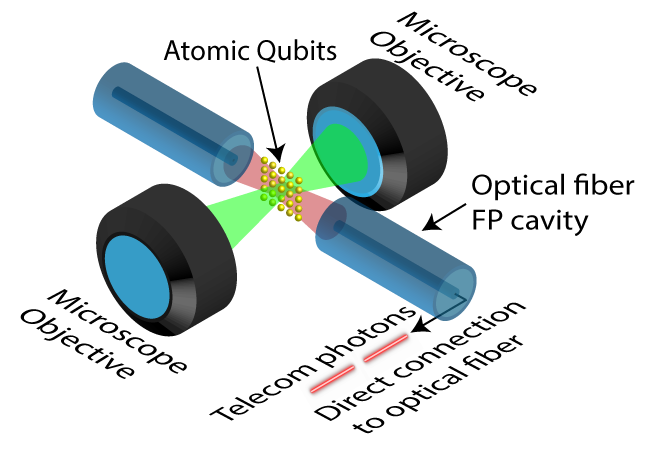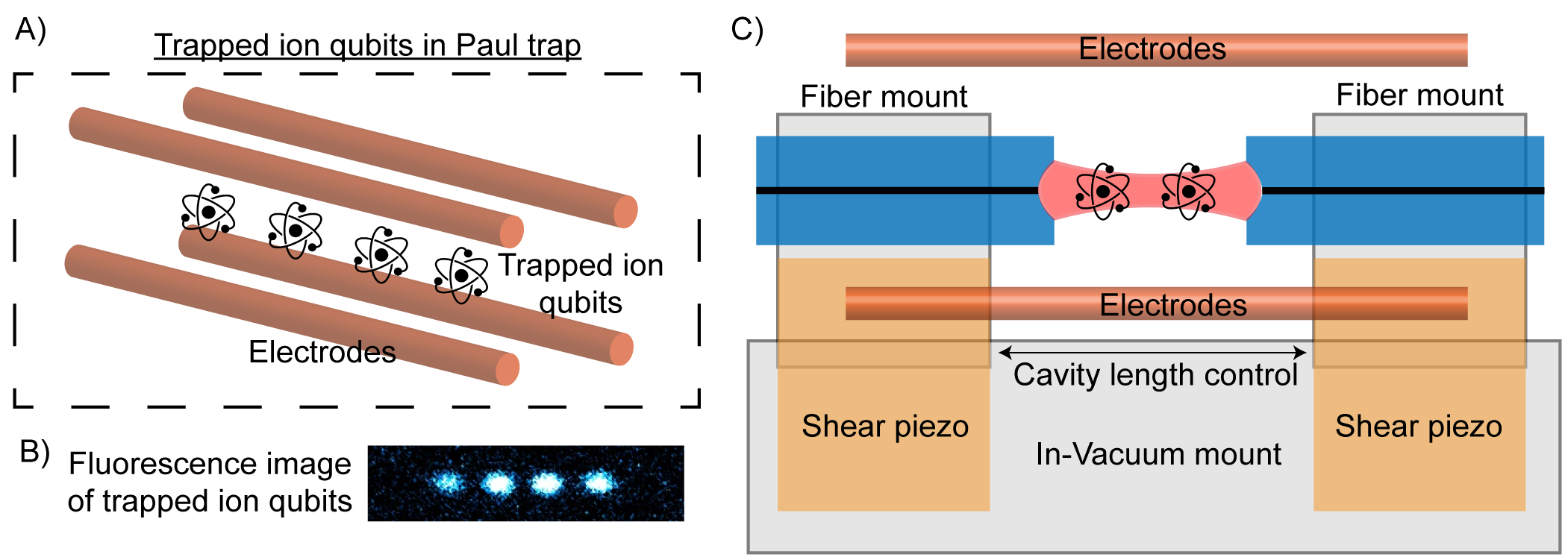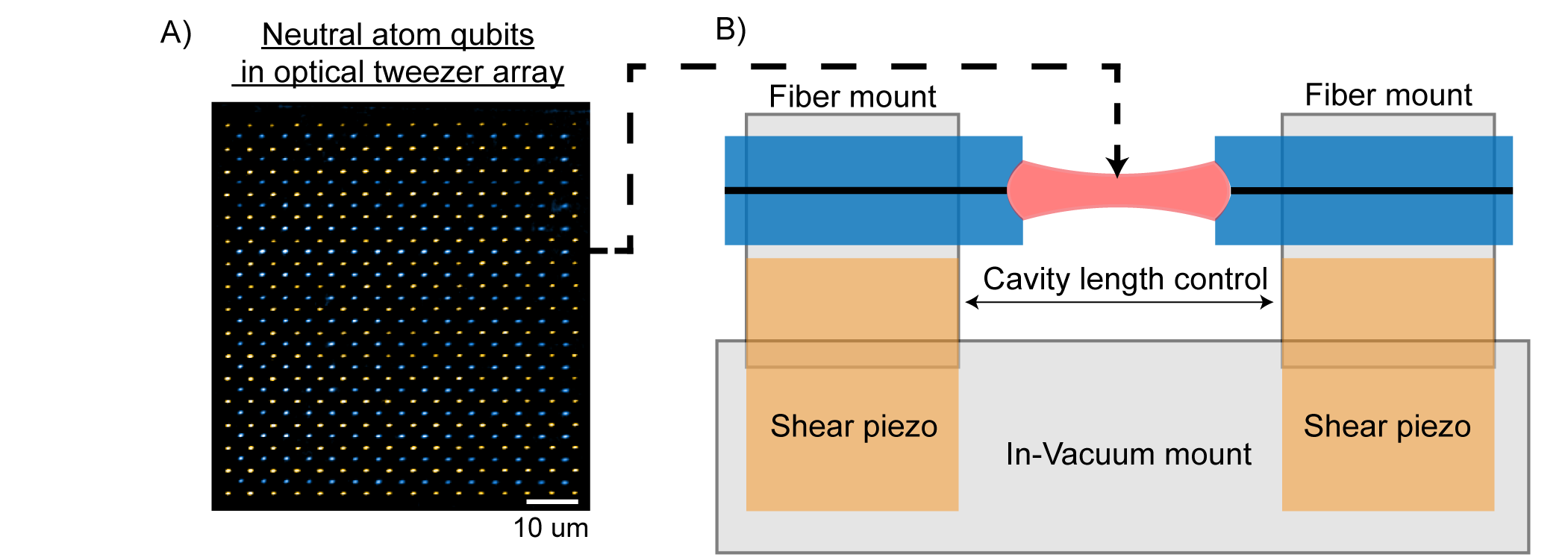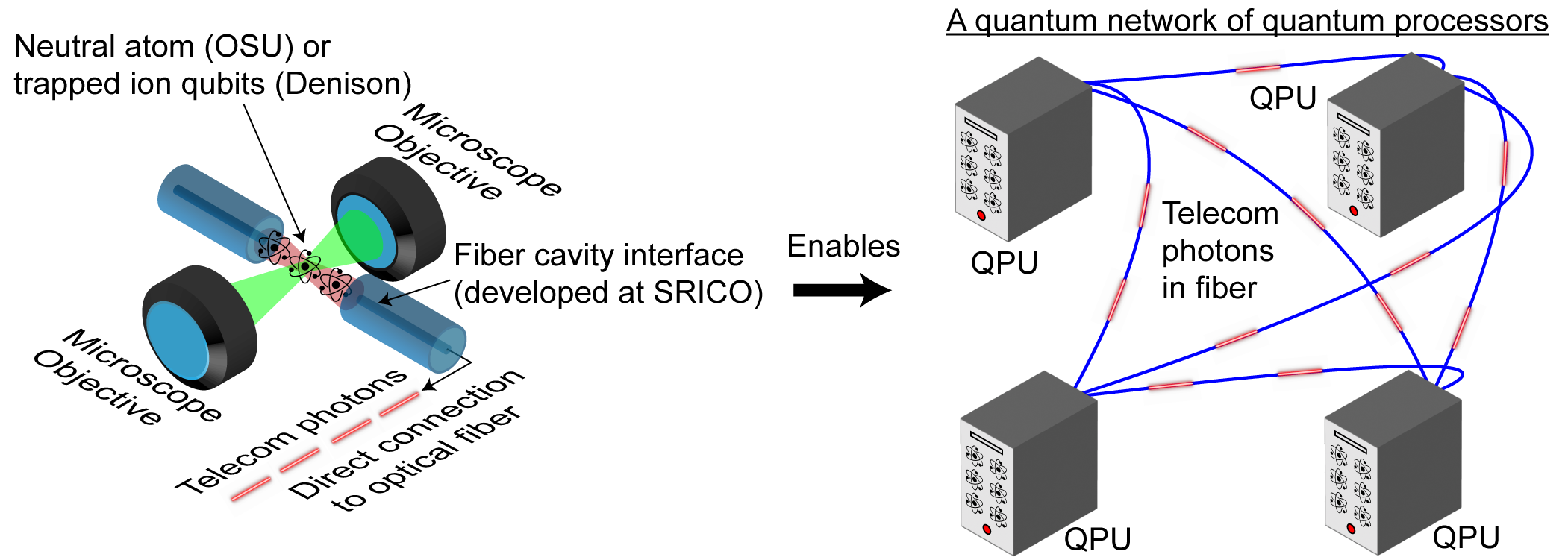Area of Interest (AOI): 5. Quantum Technologies
Innovation: A primary challenge in realizing quantum networks is the manufacturing and commercialization of efficient light-matter interfaces for atomic qubits. This proposal addresses this challenge by developing efficient fiber gap Fabry-Perot cavities (FFPCs) that robustly couple single photons from atomic qubits directly into optical fibers. This direct fiber interface enables immediate compatibility with standard telecommunication technology for the development of scalable quantum networks and distributed quantum computers.
Objective: This proposal aims to establish a domestic supplier of FFPCs to enable photon-based quantum networking with atomic qubits. These interfaces will be tested on two leading quantum computing technologies based on trapped atoms: neutral atoms and trapped ions. For each of these platforms, we will develop compact fiber mounting technology to interconnect atomic qubits with the photonic interfaces in vacuum.
Background: Optical cavities can enhance photon emission and collection, making them ideal photonic interfaces for trapped atoms. To increase the trapped atom rate of spontaneous emission into the optical cavity, it is advantageous to utilize microcavities with small mode volumes. Fiber Fabry-Perot microcavities (FFPCs), where the ends of two opposing fibers are fabricated as cavity mirrors, have emerged as a compelling photonic interface technology. In contrast to other forms of optical cavities based on standard mirrors, FFPCs are compact, possess small mode volumes, and are directly fiber-coupled, eliminating noise from alignment fluctuations. Unlike other small optical cavities based on nanostructured waveguides, FFPCs are simpler to fabricate and do not require the delicate and noise-prone placement of atoms in the evanescent fields close to surfaces. Additionally, FFPCs retain the necessary optical access for the lasers needed to trap or control the atomic qubits. These considerations make FFPCs a highly promising photonic interface for the miniaturization and deployment of network-capable atom-based quantum processors.






